The percentage of students achieving proficiency in math is ≥50% (which is lower than the Alaska state average of 69%). The percentage of students achieving proficiency in reading/language arts is ≥50% (which is lower than the Alaska state average of 79%).
Quick Stats (2025)
- Grades: Kindergarten-12
- Math Proficiency: ≥50%
- Reading Proficiency: ≥50%
- Source: National Center for Education Statistics (NCES), AK Dept. of Education
School Overview
Grades Offered
Grades Kindergarten-12
(offers virtual instruction)
(offers virtual instruction)
Total Students (19-20)
5 students
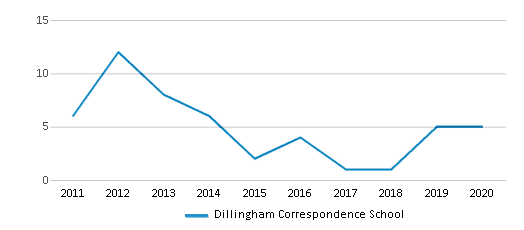
Total Classroom Teachers (17-18)
1 teacher
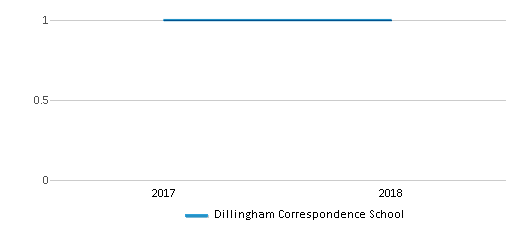
School Rankings
Math Test Scores (% Proficient)
(11-12)≥50%
69%
Reading/Language Arts Test Scores (% Proficient)
(11-12)≥50%
79%
Student : Teacher Ratio
n/a
15:1
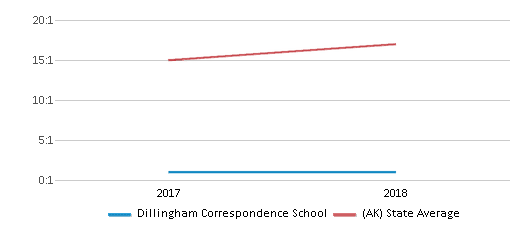
American Indian
(19-20)n/a
23%
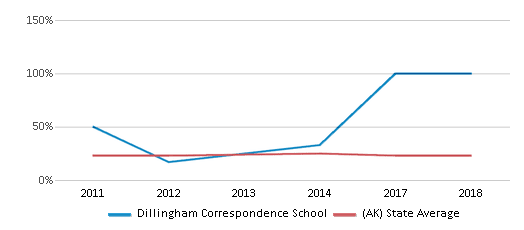
Asian
(19-20)n/a
6%
Hispanic
(19-20)n/a
7%
Black
(19-20)n/a
3%
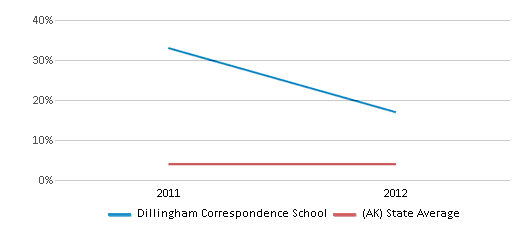
White
(19-20)40%
47%
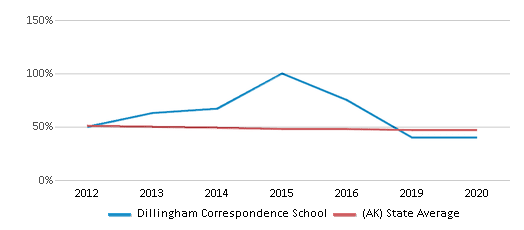
Hawaiian
(19-20)n/a
3%
Two or more races
(19-20)60%
11%

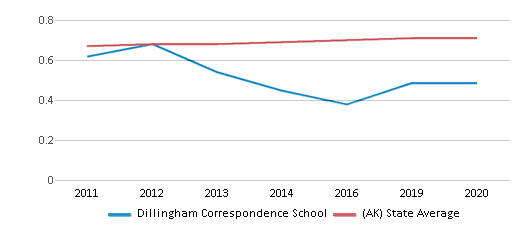
School Statewide Testing
School District Name
Source: National Center for Education Statistics (NCES), AK Dept. of Education
Profile last updated: 11/17/2024
Frequently Asked Questions
What percent of students have achieved state testing proficiency in math and reading?
≥50% of students have achieved math proficiency (compared to the 69% AK state average), while ≥50% of students have achieved reading proficiency (compared to the 79% AK state average).
How many students attend Dillingham Correspondence School?
5 students attend Dillingham Correspondence School.
What is the racial composition of the student body?
60% of Dillingham Correspondence School students are Two or more races, and 40% of students are White.
What grades does Dillingham Correspondence School offer ?
Dillingham Correspondence School offers enrollment in grades Kindergarten-12 (offers virtual instruction).
What school district is Dillingham Correspondence School part of?
Dillingham Correspondence School is part of Dillingham City School District.
School Reviews
Review Dillingham Correspondence School. Reviews should be a few sentences in length. Please include any comments on:
- Quality of academic programs, teachers, and facilities
- Availability of music, art, sports and other extracurricular activities
Recent Articles

Understanding the U.S. Department of Education: Structure, Impact, and Evolution
We explore how the Department of Education shapes American education, from its cabinet-level leadership to its impact on millions of students, written for general audiences seeking clarity on this vital institution.

Segregation in K-12 Education: Colonial Era
Explore the origins of educational segregation during the colonial era and the differential treatment of Native American, African American, and white students. This article delves into the historical context, policies, and societal attitudes that shaped early education in colonial America, highlighting the disparities and injustices that persisted within the schooling systems of that time.

December 16, 2024
Personalized Learning: Revolutionizing Education for the 21st CenturyExplore the revolutionary approach of Personalized Learning in K-12 education. This article discusses the benefits, challenges, and potential of tailoring education to individual student needs, incorporating technology and adaptive learning methods to prepare students for the 21st century.





